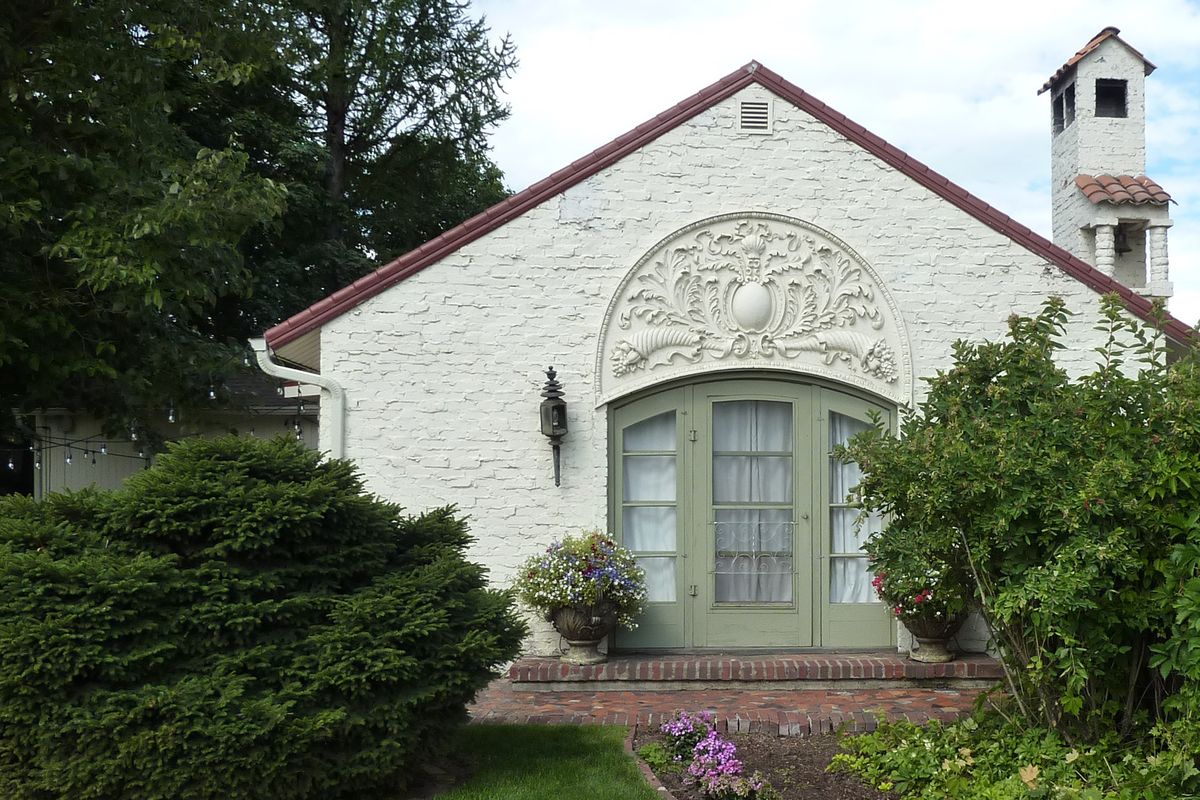Landmarks: Garden true gem in 1930s-era home built by Rose Hurst

Set back off the street behind large gates along the busy North Market Street corridor is a small house built in 1934 by a most unusual woman, Rose Hurst.
But as interesting as the house is, the garden Hurst created adjacent to it is the real show-stopper.
The two-bedroom house was of her own design in the unlikely-for-the-time Moorish style, complete with horseshoe arches throughout – in doorways, windows, over the bathtub and in ceiling architecture – a courtyard and exquisite interior tile. There is even a type of frieze above the front room fireplace depicting a camel caravan of merchants clad in Arabic robes. How and why Hurst sought to build the home in this fashion is lost to history.
Constructed during the Great Depression, the home contains material Hurst was able to come by inexpensively, according an account from her grandson Dennis Kalhar. The brick was salvaged from a Spokane building that was being demolished and laid in the weeping-mortar style. Lanterns by the front door were taken from an old horse-drawn hearse. Stepping stones were made from pieces of crocks created at a local factory. A cornucopia frieze over the front door was salvaged from another old Spokane building. A bell tower held a bell from a steamboat, though Hurst took that with her when she sold the property.
Those were difficult years, and the men who worked for her at the house would wait in bread lines and bring back food for her to cook for them all, pooling their allotments, according to the grandson’s account. Windows in the house are generous in size, with many opening toward the garden.
That friendship garden was her labor of love and is filled with all varieties of flowers, a wishing well, waterfall, special interest areas, walkways, a grotto and walnut, maple and chestnut trees, plus an olive tree and a variety of lilacs.
The garden is still elegant today, thanks to the ministrations of current owner Rene Hockenberry, who has added elements and continued to care for the original design. The base of the wishing well remains, but it has been filled in and is now a fountain. The lava rock grotto, constructed without use of mortar, is now covered with thick layers of moss.
Rhoda “Rose” Catherine (Capps) Hurst was born in 1883 in Virginia and raised on a plantation in Kentucky. Widowed in 1912, she moved to Spokane in 1917 and was employed by Northern Border Paper Mills while she raised her children.
She farmed her property but also created her elaborate decorative garden. But there’s another chapter to her story: An article in the Spokane Daily Chronicle in 1970 about this former genteel Southern woman stated that she “sought solitude from the crush of civilization” so she moved to a 640-acre plot of land near Nordman, Idaho – the time was about 1948, according to her family.
There in the woods of North Idaho she reinvented her life in a log home, managing a herd of Black Angus cattle and a large garden. She hauled her own cattle to market in Spokane, hauled water in buckets, trapped beaver and hunted deer. She was quoted as saying: “It takes courage to be a woman out here.” Rose Hurst died in 1974 at age 91.
The house and garden she left behind in the Morgan Acres area at 7527 N. Market St. has had a few owners. Rene and Brett Hockenberry bought the 1.8-acre property in 2002 and Rene operates her massage therapy business there in one of the outbuildings. Wanting others to enjoy the beautiful garden too, the couple recently opened RoseHurstGardens, an event venue for weddings and other special occasions, able to accommodate 175 people. For that purpose, an outdoor stage, patio and two tournament-sized bocce ball courts have been added.
Keeping the garden up to Rose Hurst’s standards requires considerable attention, Rene Hockenberry is the first to admit.
“But really, I don’t consider it my garden; it’s hers,” she said. “But I do so love working in it.”